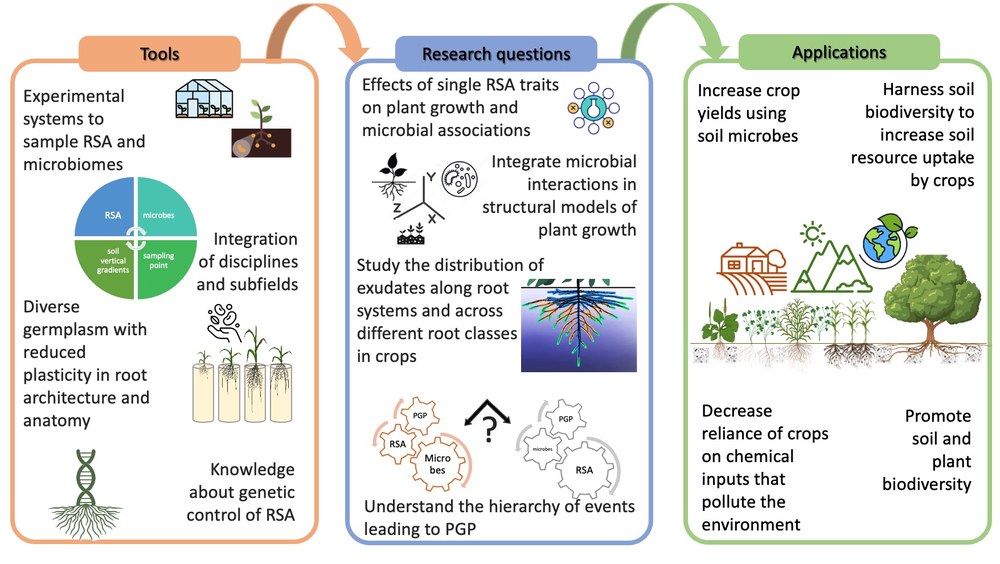
Tools, research, and applications
Authors
Galindo-Castañeda T, Martin Hartmann, JP Lynch
Source
Journal of Experimental Botany 2023
Download Options
Journal of Experimental Botany
Abstract
Root architectural phenotypes are promising targets for crop breeding, but root architectural effects on microbial associations in agricultural fields are not well understood. Architecture determines the location of microbial associations within root systems, which when integrated with soil vertical gradients, determines the functions and the metabolic capability of rhizosphere microbial communities. We argue that variation in root architecture in crops has important implications for root exudation, microbial recruitment and function, and the decomposition and fate of root tissues and exudates. Recent research has shown that the root microbiome changes along root axes and among root classes, that root tips have a unique microbiome, and that root exudates change within the root system depending on soil physicochemical conditions. Although fresh exudates are produced in larger amounts in root tips, the rhizosphere of mature root segments also plays a role in influencing soil vertical gradients. We argue that more research is needed to understand specific root phenotypes that structure microbial associations and discuss candidate root phenotypes that may determine the location of microbial hotspots within root systems with relevance to agricultural systems.

